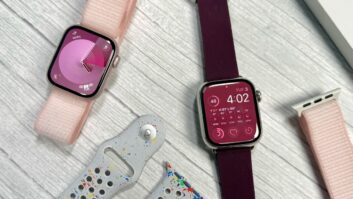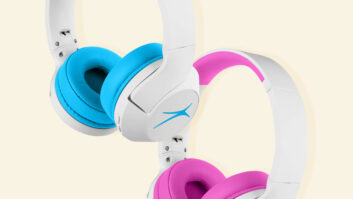To anyone who’s been paying attention to the headphones industry, Apple’s announcement that it was dropping the 3.5mm port was no surprise.
Beyond the rumors, which first presented in TWICE offices in 2014, headphones manufacturers have been readying for a switch with a select few companies releasing Lightning-capable models and most placing a greater emphasis on their Bluetooth offerings.
Also to be expected was the consumer outrage elicited by Apple’s news, with many decrying the move as a change no one asked for. (The Verge’s cofounder Niley Patel called the move “user-hostile and stupid” in a June story.) The reaction was similar to the one we saw in 2012 when Apple first introduced the Lightning connector. Consumers were outraged that many of their 30-pin accessories had become obsolete, while retailers were presented with a harsh reality that any legacy products in stock just had their shelf lives murdered. There was an adapter then too, but it was an awkward and problematic solution.
What’s more, there are many more headphones now than there were 30-pin accessories, and consumers can be fiercely loyal to their cans. We’re willing to bet most iPhone users care more about the headphones in their ears than a few extra millimeters taking up space in their pockets.
At the same time, while it’s possible Apple will lose some of its 100 million-plus users to the Android Side, we’re also willing to bet that the majority of consumers will — eventually — adapt, especially as more Lightning-capable headphones hit the market and average selling prices of such models drop.
Ben Arnold, executive director and industry analyst of consumer technology at The NPD Group, agreed. “I think consumers will adapt to the change. We are seeing a shift in the headphone market towards more Bluetooth sales, and as we saw [on Sept. 7], Apple is providing both an adapter and a pair of Lightning connector headphones in the box.”
Added Arnold: “I think the removal of the headphone jack is a response to the momentum in the headphone market that, from Apple’s view, benefits the design of the phone (making it more resistant to water and dust, perhaps making room for a larger battery).” As such, said Arnold, the industry can expect to see headphones companies more heavily promoting Bluetooth as a way to capitalize on the buzz.
For the companies that make headphones with detachable cables, it likely won’t take long for them to get up to speed. As Val Kolton, CEO of headphones manufacturer V-Moda, told us back in July when we asked his thoughts on the still-unconfirmed switch: “To us, it’s just creating another cable.”
To be sure, it will be more difficult for headphones manufacturers to pump low-end headphones into the market. Noted Kolton, “I think it can filter out a lot of companies that can’t make quality headphones. It ups the ante to see if you can build a quality headphone.”
What is certain is that the tech accessories market has been presented with a new opportunity as iPhone 7 users will seek out solutions that provide both quality and convenience while adjusting to their new Apple reality. Whether they appreciate this forced journey is another question.













